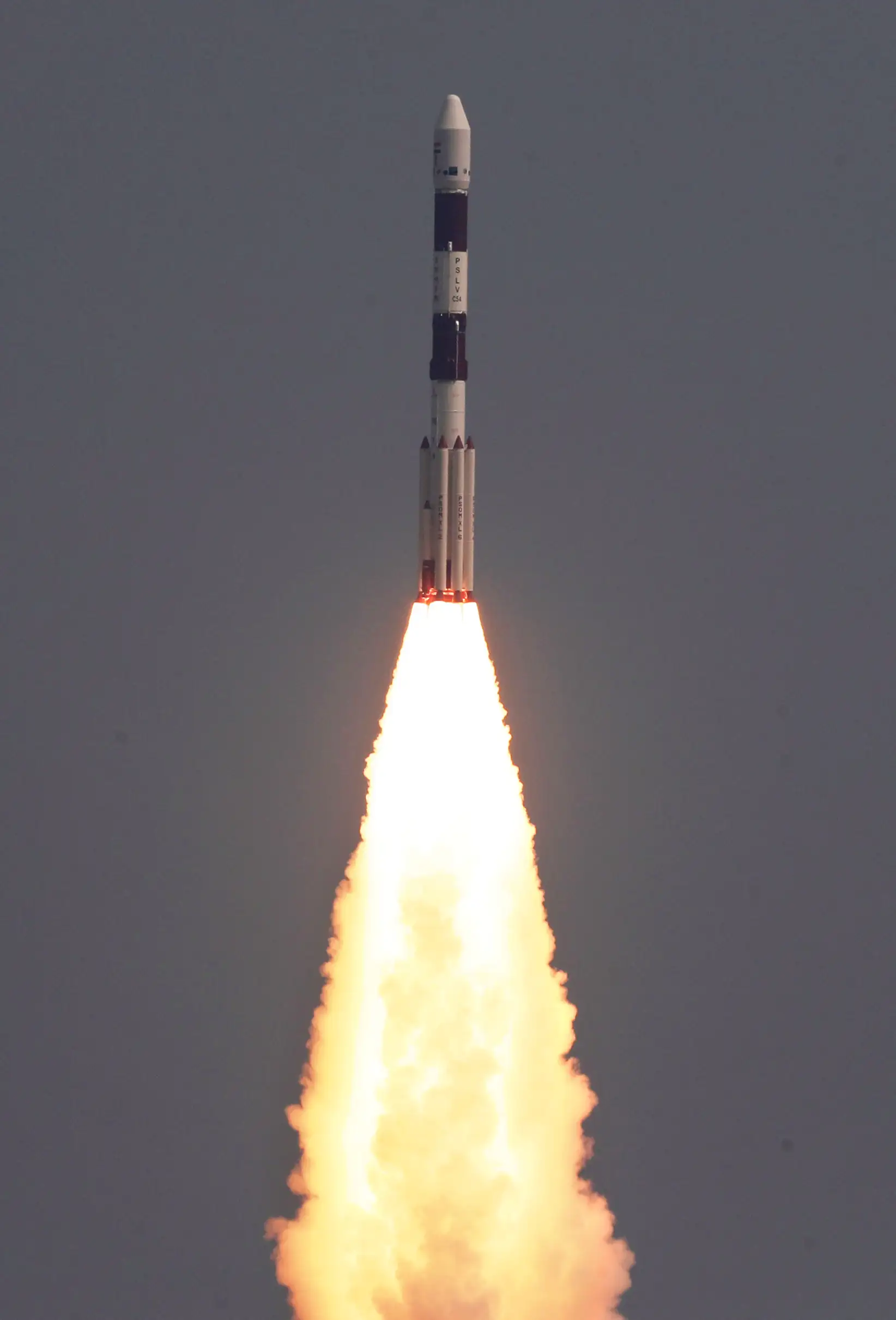
New Delhi: The Indian Space Research Organisation’s (ISRO) workhorse Polar Satellite Launch Vehicle PSLV-C54 successfully launched the earth observation satellite (EOS)-06, along with eight nano-satellites into two different sun-synchronous polar orbits (SSPOs).
The mission was accomplished from Satish Dhawan Space Centre at SHAR, Sriharikota, Andhra Pradesh today morning. ISRO stated all seven commercial satellites from NewSpace India Limited (NSIL) were deployed successfully.
The India-Bhutan satellite, a collaborative mission between India and Bhutan, is an INS-2B satellite for Bhutan with two payloads – NanoMx, a multispectral optical imaging payload developed by Space Applications Centre (SAC) and APRS-Digipeater which is jointly developed by the Department of Information Technology and Telecom (DITT), and the U R Rao Satellite Centre (URSC) of ISRO, was also successfully deployed.
Prime Minister Narendra Modi said that the India-Bhutan Satellite is a testament to India’s special relationship with the people of Bhutan. The King of Bhutan Jigme Khesar Namgyel Wangchuck said the launch of India-Bhutan SAT today was a “historic milestone in the exemplary and enduring friendship between Bhutan and India”. Both congratulated ISRO and DITT for the accomplishment of the mission.

EOS-06 is the third generation Indian satellite in the Oceansat series for monitoring the oceans. It provides continued services of Oceansat-2 with enhanced payload capability. For the first time in this series, it houses three ocean observing sensors – Ocean Colour Monitor (OCM-3), Sea Surface Temperature Monitor (SSTM), and Ku-Band Scatterometer (SCAT-3). There is also an ARGOS payload. All these sensors have their own importance for India’s blue economy aspirations.
The advance 13-channel OCM with 360 m spatial resolution and 1400 km swath will observe the day side of the earth every day and will provide crucial data on the distribution of ocean algae which is the base of the food chain within the marine ecosystems. The OCM-3 with a high signal-to-noise ratio is expected to provide improved accuracy in daily monitoring of phytoplankton having a wide range of operational and research applications including fishery resource management, ocean carbon uptake, harmful algal bloom alerts, and climate studies.
The SSTM will provide ocean surface temperature which is a critical ocean parameter to provide various forecasts ranging from fish aggregation to cyclone genesis and movement. Temperature is a key parameter required to monitor the health of the coral reefs, and if needed, to provide coral bleaching alerts. The Ku-Band Pencil beam scatterometer onboard EOS-6 will provide a high-resolution wind vector (speed and direction) at the ocean surface, something which any seafarer would like to know of, whether it’s fishermen or a shipping company. The data on temperature and wind is also very important for assimilation into ocean and weather models to improve their forecast accuracies.
ARGOS is a communication payload jointly developed with France and it is used for low-power (energy-efficient) communications including marine robotic floats (Argo floats), fish tags, drifters, and distress alert devices useful for conducting effective search and rescue operations.
The Oceansat-2 which was launched in September 2009 is configured to cover global oceans and provide continuity of ocean colour data with global wind vector and characterization of lower atmosphere and ionosphere.
The Oceansat-3 is expected to provide improved accuracy in a wide range of operational and research applications including fishery resource management, ocean carbon uptake, harmful algal bloom alerts, and climate studies. It was placed in the polar orbit at a height of about 740 kilometres above sea level. While at ~1100 kilograms, it is only slightly heavier than Oceansat-1 launched in 1999.
Today’s mission resulted in many research collaborations nationally and internationally in various areas such as global chlorophyll distribution, Kd 490 distribution, ocean colour images, oil spillages, and wind vector products.
The EOS-06 is envisaged to observe ocean colour data, sea surface temperature and wind vector data to use in Oceanography, climatic and meteorological applications. The satellite also supports value-added products such as potential fishing zone using chlorophyll, Space Surveillance and Tracking (SST) and wind speed and land-based geophysical parameters. The Primary satellite (EOS-06) has been separated in Orbit-1. The major operational user of this satellite would be Ministry of Earth Sciences institutions such as the Indian National Centre for Ocean Information Services (INCOIS), Hyderabad and National Centre for Medium-Range Weather Forecasting (NCMRWF), Noida, which provide a bouquet of services every day for lakhs of stakeholders across the nation.
The satellite launch was witnessed by Secretary, Ministry of Earth Sciences, Dr. M. Ravichandran, and the Secretary, Department of Biotechnology (DBT), Dr Rajesh Gokhale. Union Minister of State for Science and Technology; Earth Sciences; Atomic Energy and Space, Dr Jitendra Singh, stated ISRO will continue to maintain the orbit of the satellite and its standard procedures for data reception, and archiving. Dr. M. Ravichandran, Secretary, MoES, said the launch of Oceansat-3 today was also significant since this was the first major ocean satellite launch coming from India since the initiation of the UN Decade of Ocean Science for Sustainable Development (UNDOSSD, 2021-2030).
– global bihari bureau





